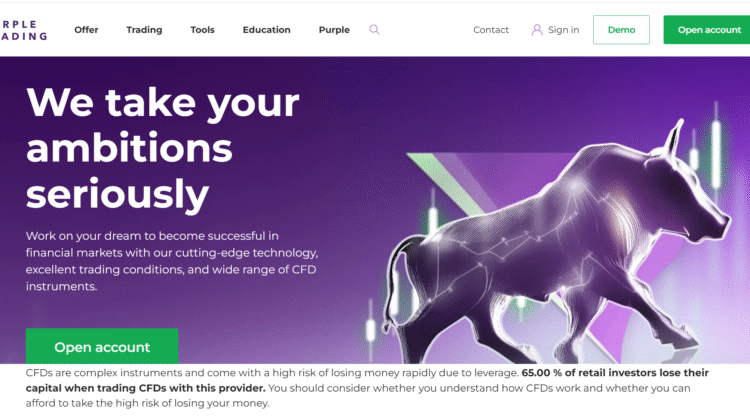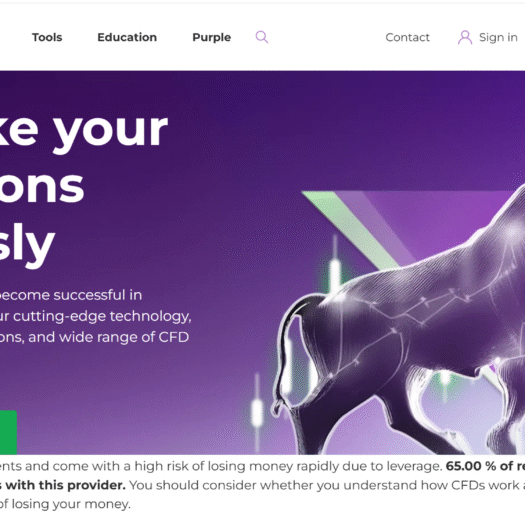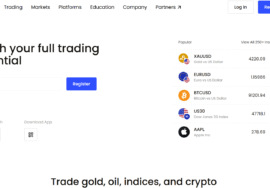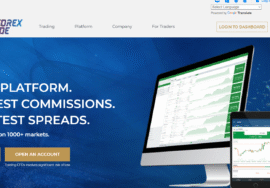
7 Crucial Realities: Why Purple Trading Shines Yet Demands Caution from Traders
7 Crucial Realities: Why Purple Trading Shines Yet Demands Caution from Traders

Purple Trading is a broker offering forex, CFDs, indices, commodities, futures, and stocks, with well-known platforms like MetaTrader 4, MetaTrader 5, and cTrader. It comes with regulatory oversight under CySEC and offers competitive spreads, multiple account types, demo accounts, and some educational resources. There are many positives to commend. However, there are also several less obvious drawbacks many traders should understand fully. Below are seven crucial realities you need to know before trusting Purple Trading with real funds.
1) Regulation is strong, but regional restrictions apply
Purple Trading is a licensed Cyprus Investment Firm (CIF), regulated by CySEC under license number 271/15. The legal entity is L.F. Investment Limited. Because it’s regulated in the European Union, it must follow rules such as client fund segregation, periodic reporting, transparency of legal documents, risk disclosure, and offering negative balance protection. This gives a positive safety baseline compared to unregulated brokers. However, there are regional restrictions: clients from outside the European Economic Area or from certain countries (for example Belgium, Switzerland, USA) are not accepted. That means not everyone can access all of its services; if you live in a restricted region, you might be blocked or forced to use a different entity with different rules.
2) Wide instrument and platform selection elevates flexibility
Purple Trading offers a broad range of instruments: forex pairs, indices, commodities, stocks, futures, etc. It supports multiple platforms: MetaTrader 4, MetaTrader 5, and cTrader. For traders who prefer different styles — some wanting the classic MT4 tools, others preferring the more modern charting or order types in cTrader — this variety is a positive strength. There is also a “Purple Zone” and tools for passive investment, strategies, and an academy for education. Tools like macro-economic calendars, indicators, market analysis, and frequently asked questions are provided. This level of flexibility and educational support is significantly more than many minimal brokers that offer only one platform or very limited instruments.
3) Spreads and execution are competitive, though with caveats
Purple Trading advertises ECN-style spreads, often as low as 0.3 pips for major forex pairs (e.g. EUR/USD, GBP/USD), with minimal position sizes, positive slippage, and leverage capped under EU rules. For instruments like gold (XAU/USD), indices, or futures, spreads are wider. Also, certain instruments or account types come with commission, swap-fees, or overnight financing. The execution speed is promoted as “lightning-fast,” but reviews from users on comparison sites suggest that during volatile periods, spread widening or slippage can increase. These trade-offs are typical in competitive brokers, but important to anticipate; what looks cheap in calm market conditions can become costly when markets move fast.
4) Educational resources and transparency are decent, but not perfect
Purple Trading offers an academy section, ebooks, news, guides, risk disclosure, order execution policy, and legal documents such as conflict-of-interest policy, privacy policy, investor compensation policy. This transparency is a strong positive, especially for traders who care about compliance and want to see how the broker defines risks, withdrawal policies, client classification, etc. However, some users report that educational materials are not as deep or interactive as in brokers focused specifically on beginner education. There are fewer webinars or live tutorials compared to firms focused on mass retail. Also, documentation sometimes includes conditions that depend on region, account type, or trade volume, which can shift real experience versus what marketing suggests.
5) Costs beyond spreads can erode gains for smaller traders
Because Purple Trading is regulated in the EU, leverage for retail clients is limited (often to 1:30 for major forex, lower for other instruments). That is positive for risk control but limits how much you can amplify positions. Also, besides spreads, there are commissions (particularly in certain account types or platforms), swap/overnight charges, possibly withdrawal fees or minimums, and sometimes higher costs for less liquid instruments. For traders with small capital or who trade infrequently, these additional cost components may significantly reduce net profits. Promotional materials may highlight low spreads, but fully factoring in all costs reveals that smaller-scale trading is less advantageous than for high volume or institutional style clients.
6) Withdrawal, verification, and customer service: mixed feedback
Purple Trading claims that deposits and withdrawals function via trusted payment providers, including bank transfers, cards, and other regulated electronic money institutions. It has legal documentation for deposit/withdrawal policies, client classification, order execution, and investor compensation. Users on broker-review sites often praise the honest risk disclosures and relatively clean reputation. But in user forums (such as community feedback platforms and comparison review sites), there are occasional criticisms: delayed verification steps, extended time for withdrawal processing, slower support during market spikes, or delays when large volumes or profits are involved. This is not unique to Purple Trading, but based on the frequency of such reports, cautious traders should test withdrawal with small sums before committing large capital.
7) Reputation is solid but not immune to risk
Purple Trading has built a stronger reputation in recent years thanks to its regulation, selection of platforms, instrument diversity, and relatively transparent operations. Compared to many offshore or newer brokers that promise outsized leverage or big bonuses, it appears more conservative, more realistic. That builds trust among more serious traders. But reputation alone does not eliminate risk. No broker, regardless of license, can prevent market risk, sudden regulatory changes, or internal compliance delays. Also, newer competitors or brokers in comparison rankings often highlight advantages that Purple Trading may match or exceed. Firms like IG, Saxo Bank, or Oanda are often used as benchmark references in reviews. Given that, even a well-regulated broker must continuously maintain high execution, fair pricing, good customer support, and transparent policies if it wants to stay credible.
Conclusion: Final Verdict on Purple Trading
Purple Trading presents itself as a relatively safe and credible broker, especially compared to many of the offshore or minimally regulated entities that flood forums and reviews with promises of high leverage and bonuses. Its regulation under CySEC gives it a strong legal backbone in the European Union, ensuring safeguards for client funds, obligations for transparency, and requirements for risk disclosure. The fact that it offers several platforms (MetaTrader 4, MetaTrader 5, cTrader), a wide range of tradable instruments, and dedicates resources to academy education and legal disclosure adds to its positive profile. These features make it a reasonable choice for intermediate or advanced traders, those who value reliability, execution, and regulatory compliance.
Yet, Purple Trading is not without its demanding parts. The cost structure, when fully understood, shows that spreads are only a part of the equation; commissions, swaps, varying spreads in volatile periods, and indirect fees such as withdrawal costs can eat into profits—especially for traders with small capital or those who trade infrequently. Also, regulatory limitations on leverage under EU rules mean that for people used to very high leverage, Purple Trading may feel restrictive. It is a trade-off: reduced risk at the cost of reduced potential amplification.
The verification and withdrawal processes, while honest in policy documents, have mixed user feedback in practice. Some users report delays or extensive documentation requests before profits can be withdrawn. That is a common issue among regulated brokers, but frequency of such feedback suggests future clients must treat the process as something to test, not assume will always be smooth. Starting with small deposits, small trades, confirming withdrawals early, and documenting every step is critical. The reputation of Purple Trading is a strong asset, but reputation is continuously tested in execution, real-world service, and fairness when clients scale up.
To conclude, Purple Trading is a solid option if you want a regulated broker, good platform options, acceptable cost, and you are ready to study, test, and trade carefully. It is likely not the best for those seeking ultra-high leverage, zero verification, or aggressive bonus schemes. If I were you, I’d use a demo first, deposit a small amount, trade for some time, then try withdrawing a modest profit to test support, speed, transparency. If all that works, then consider scaling up. Always remember that in trading, protection doesn’t come from trust alone—it comes from testing, documentation, and cautious growth.








